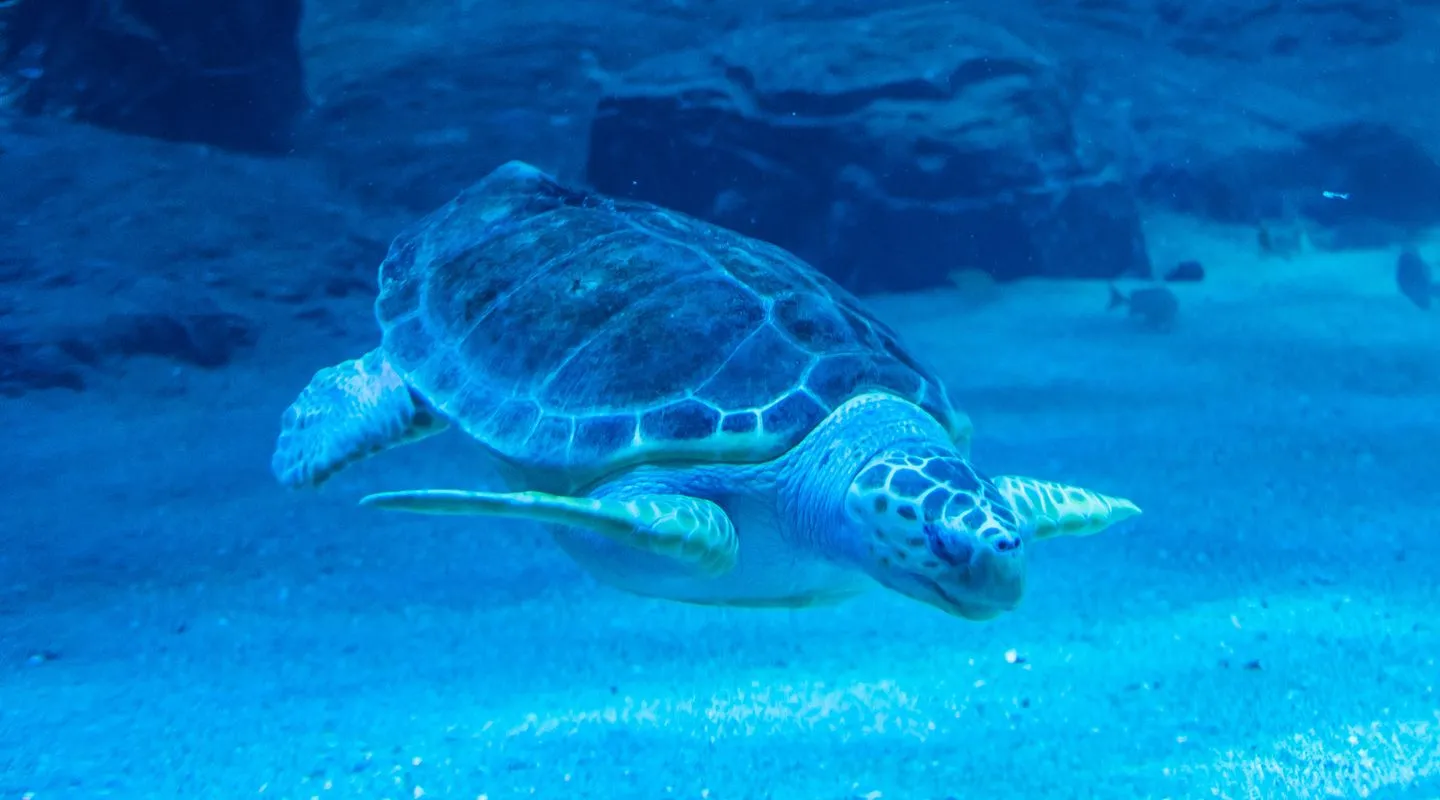It is one of the first loggerhead sea turtles born in captivity in Europe, a major event for a species under such threat in the wild.

Reptiles and amphibians

Identity card
appendix I
It is found mainly in tropical or subtropical waters and also in temperate or even cold seas.
The loggerhead sea turtle lives close to the coast and is a migratory species.
It measures approximately 1.2 metres and weighs between 150 and 250 kg.
It is a carnivore reptile which feeds on jellyfish, sponges and echinoderms.

NAUSICAA’s loggerhead sea turtle was born on 20 June 2011 in a partner institution.
It is one of the first loggerhead sea turtles born in captivity in Europe, a major event for a species under such threat in the wild.
Biomimetics: the turtle has inspired the construction of the u-cat undersea robot for observing different seabed environments without creating turbulence.
The temperature of the turtles’ habitat has an effect on the incubation time and sex of the embryos. When the time comes to lay, they leave the water to dig a nest and then lay about a hundred eggs. Then then cover them up before returning to the sea. This operation generally takes less than an hour. 46 days: The incubation time for the eggs of the loggerhead sea turtle lasts between 46 and 71 days.
The loggerhead sea turtle lives close to the coast and is a migratory species. After the green sea turtle, the loggerhead sea turtle is the most common turtle. It is found mainly in tropical or subtropical waters and also in temperate or even cold seas.
This large marine turtle is found in many areas of the world. It has a large head and a powerful beak. It measures approximately 1.2 metres and weighs between 150 and 250 kg.
If present in sufficient numbers, loggerhead sea turtles can play an important part in controlling jellyfish populations; an adult loggerhead sea turtle can swallow several hundred Pelagia stinging jellyfish a day.
It is a carnivore reptile which feeds on jellyfish, sponges and echinoderms. It also eats fish, crustaceans or even seaweed, shredding it with its beak.
The loggerhead sea turtle is under threat on several counts: hunting, being accidentally caught in drift nets and the propellers of pleasure boats, tourism and urban development which are destroying their laying sites, etc.
Vulnerable Trade in turtles is prohibited, except with special exemption. It is also protected by the Bonn Convention.
journey on the high seas

The Ocean Mag
In the spotlight
Found in all the world's seas, the jellyfish intrigues and fascinates. But watch out, you might get burnt !

Article
From the North Sea to the Mediterranean, the jellyfish can leave burning memories for swimmers who come into contact with them.
Article
New at Nausicaá! A new species of jellyfish makes its first appearance in the Mankind and Shores exhibition.